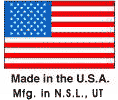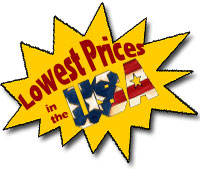
SHOCK ABSORBING PROPERTIESDescription: Crumb Rubber & Rubber Mulch were evaluated for shock
absorbing properties using the equipment described in Summary: Crumb Rubber and Rubber Mulch exceeded the critical height limits (Under 200 “G” max and under 1000 HIC) at a 6" depth in both the 9' drop height as well as the 10' drop height. FLAMMABILITY STUDYDescription: Crumb Rubber and Rubber mulch were tested using the method described in 16CFR 1500.44 of the Federal Hazardous Substances Act for Rigid and pliable solids (A material is considered “flammable” if it ignites and burns with a self-sustained flame at a rate greater than .01 inches per second along a major axis.) Summary: In each test reading, the Crumb Rubber and Rubber Mulch had a burn rate significantly less than that required for it to be considered “flammable”. Based on the testing results, the Crumb Rubber and Rubber Mulch is considered non-flammable according to the requirements of the Federal Hazardous Substances Act. The testing company also documented that “specimens were easily extinguished after the 60 second testing period”. TEMPERATURE COMPARISON STUDYDescription: Crumb Rubber and typical play sand were tested to compare the temperatures under full sunlight which would be encountered under normal use in a typical playground setting. Test bed dimensions were 16" x 24" x 3" deep and all the readings were on a 30 minute average with an ambient air temperature of 101∘ F. Summary: In each test reading, the Crumb Rubber remained significantly cooler than the play sand by as much as 20 degrees. MISCELLANEOUS TESTING RESULTSMelting Point: 234∘ F TOXICITY TESTDescription: Crumb Rubber and Rubber Mulch were immersed into a strong hydrochloric acid (an acid which is significantly stronger than stomach acid). Summary: There was basically no reaction to the Crumb Rubber. The testing company attributed the .7% loss to the nylon/rayon fiber, but the rubber itself did not react to the acids. Therefore, the chance of digestion is very slim based on the data collected. ENVIRONMENTAL INFORMATIONGround Tire Rubber (“GTR”) is a non-hazardous, filled hydrocarbon polymer and is considered to be non-toxic, non-metallic, principally organic, carbon based material. EPA compliance monitoring section has stated that rubber added to the soil is not hazardous. It is “inert” and biodegradable, but won’t break down for 25+ years. In 1990, testing commissioned by the Rubber Manufacturer’s Association show that leachate from tire samples contained only a few metal and organic compounds. The concentrations of these metals and compounds were 1-3 times less than those proposed TCLP regulations and EPA primary drinking water standards. In 1994, the EPA added recycled rubber to it’s Comprehensive Procurement Guide (CPG). ADVANTAGES OF USING DECORATIVE RUBBER MULCHClean and non-toxic and resilient. Our product does not produce leachate. It does not attract or maintain moisture that most surfacing products do. It’s economical; lasting for years. It reduces dust and mud around problem areas. It does not attract animals, rodents or insects. It will not rot or decay and it is not susceptible to reduced performance due to rainy weather or freezing temperatures. |

Copyright © 2001 - 2010 IMR, Inc.
 |
|
 |